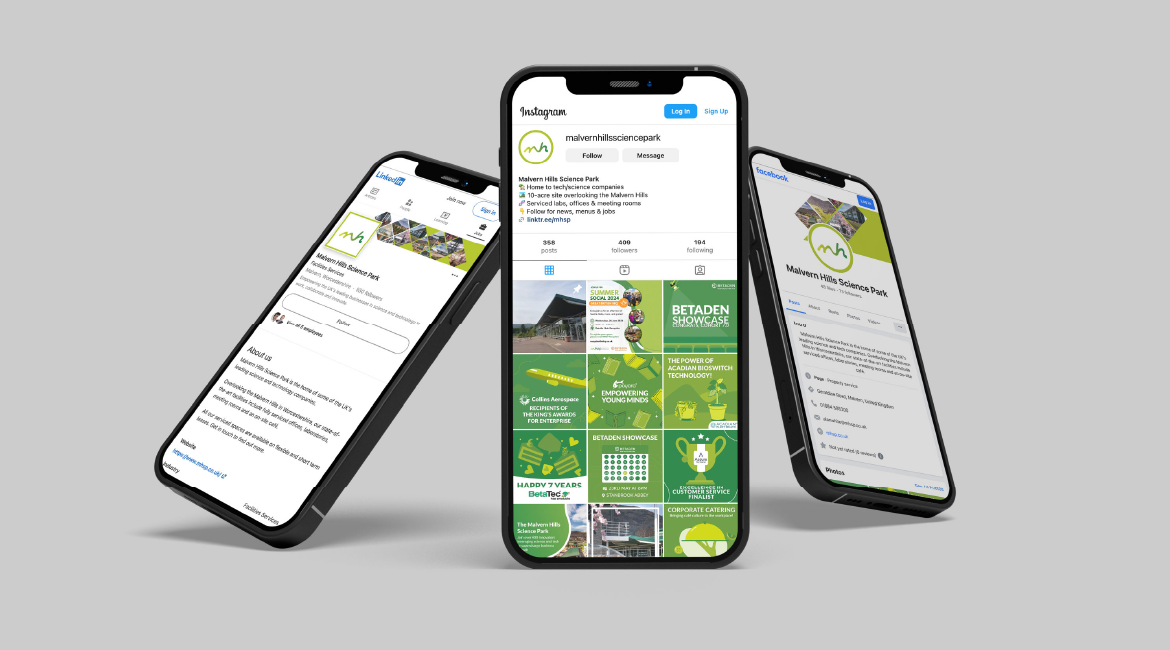A list of marketing channels: what ones should your business use?

We offer insights and solutions IN WEBSITE DESIGN, BRANDING & DIGITAL MARKETING
June 16, 2021
7 Mins
Don’t follow trends or second-guess your marketing efforts. Discover what types of marketing channels make sense for your small business to ensure you generate more leads.
For small businesses operating in a tech-savvy world, trying to get noticed is becoming increasingly challenging. Sadly, there’s no one-size-fits-all recipe to marketing success.
The accessibility of digital marketing channels has created an incredibly saturated market – leaving smaller businesses with smaller budgets struggling to keep up with global brands.
But all is not lost.
It’s time to roll up your socks, embrace innovation and get smarter with your marketing strategy.
A perfect place to start is to assess the list of marketing channels available and ask some critical questions to determine what ones are right for your business.
If you can do this, you’ll not only save yourself a whole lot of cash and effort, but you’ll generate more enquiries too.
The first stop: the four types of marketing channels.
What are the four types of marketing channels?
The four types of marketing channels are direct selling, indirect selling, dual distribution and reverse marketing – otherwise known as the four channels of distribution.
Traditionally, there were only two – direct selling and indirect selling. Direct selling is where the producer and customer deal directly with one another. Indirect selling involves an independent intermediary.
There are benefits to both approaches. Direct selling enables businesses to operate with higher margins, maintain quality contact with customers and uncover fast feedback. Meanwhile, indirect selling generates more leads, provides a larger coverage and lowers support costs.
By weighing these options up, you can choose the best marketing channels to entice your target customers.
However, there are a couple of newer emerging options called dual distribution and reverse marketing.
This challenging time taught us both to re-evaluate life and what’s important.
Dual distribution involves employing a combination of both strategies. For example, Nike sells directly to customers through their website, app and stores. They also sell indirectly through various retail outlets.
On the other hand, reverse marketing gets customers to seek the producer through advertising and online media. The focus is on having customers approach you as the potential seller.
Within each of these four types, there are various examples of marketing channels. We’ve listed a few of the most promising to get you started.
A list of marketing channels to consider
It’s easy to get stuck in a repetitive loop of managing your existing channels. Nevertheless, try to do your homework and figure out what’s working and what isn’t.
Social media marketing
Of course, you have your Facebook, LinkedIn and Twitter pages. Heck, you may even be venturing into the exciting worlds of Instagram, YouTube and Reddit. (Steady on!) But when was the last time that you took a fresh approach to these channels?
Perhaps you share updates, blogs and video snippets. If these are performing brilliantly, keep going. If not, think about taking a more innovative approach.
Get everyone in your team to share their suggestions and see what sizzles. These ideas may include:
• Competitions and giveaways
• Influencer content
• Animations
• User-generated content
• Polls and surveys
• Audio content snippets
Finally, don’t forget to check out what your competitors are up to. Consider what their more popular posts are and use them as inspiration for developing a great social media strategy.
Pay Per Click (PPC) advertising
Search engine optimisation (SEO) is likely to be a fundamental pillar of your marketing strategy. Yet, with higher competition and forever-changing algorithms, getting to the top of Google’s search results is becoming a tricky task without the right digital agency behind you.
PPC advertising is the ultimate hack to secure peak positions for your content. As the name suggests, your business only needs to pay when a customer clicks on the ad.
However, the success of this strategy is limited by your keyword knowledge. If you’re considering this marketing channel, it’s vitally important that you choose your keywords wisely to optimise the effectiveness of your PPC strategy.
Also, try to think about the following questions:
• How many page visits are required for actual conversions?
• When is best to start and stop a PPC campaign?
• Are your advertisement texts and meta descriptions enticing the right people?
• Does my target audience search for things on Google or Bing? If so, is it their first port of call?
Doing your research on this now will enable you to figure out the potential of this type of marketing channel and whether it can generate a healthy return on investment.
Your website
PPC advertising and social marketing will draw people in, but good website design and copywriting is key to converting the traffic.
Remember, a website is your ultimate marketing channel. You can use it to communicate just about anything. Don’t neglect it and fall into classic traps such as:
• Failing to make your site responsive
• Missing a clear call to action
• Cramming lots of information onto the home screen
• Overloading and hiding the navigation bar
• Adding underwhelming imagery and abandoning colour schemes
The first step? Conduct a website audit. Once you know what to improve, make changes and benchmark to investigate how your changes impact conversion rates. If it needs more work, get in touch and we can offer specialist support.
Content and multimedia marketing
Content marketing is now about so much more than blogs, press releases and email campaigns. It’s time to go multimedia.
When you start to do this, you’ll uncover a whirlwind of new marketing channels for your content – ones that can fuel other common marketing channels like social media platforms, PPC campaigns and your website. Some prime examples of multimedia marketing include:
• Infographics
• E-books and whitepapers
• Webinars
• Podcasts
• Surveys and reports
• Checklists
• Slide decks
• Courses
• Recorded videos
Whichever avenue you choose to explore, always stick to the fundamentals of keeping your messaging clear, concise and focused. Forget the technical talk and jargon. Connect with your customers on a simple, human level.
As Sir Richard Branson said, “Complexity is your enemy. Any fool can make something complicated. It is hard to keep it simple.”
Word of mouth marketing
Marketing doesn’t always need a big budget.
Often, the most effective marketing channel is through customers telling their friends about how awesome your product/service is.
Of course, SEO, social media and PPC advertising can make a real difference. But the number one factor in a brand’s success is its ability to solve a problem better than everyone else. While your impact on word of mouth marketing is limited, you can actively manage third-party review sites to build up a better reputation.
When you build up a reputation on websites like Google Reviews, Trustpilot and Yelp, you’ll spread positive messages, bolster your legitimacy and improve your website’s ranking on search engines.
This approach is crucial for all small business businesses. With their vast reach, these review sites are arguably the most effective marketing channel.
How to choose the right marketing channels
When presented with such a great list of marketing channels, it can be difficult to determine which is right for your business. Making a poor choice can cause big budgeting problems. In fact, Proxima’s research into the state of digital marketing spends revealed that companies are wasting around 40-60% of their digital budgets on ineffective marketing channels and campaigns.
So, remove your blindfold before you take the plunge and consider the following four factors:
1. Will we achieve our economic goals through this channel?
2. Will this channel reach our target audience? (I.e. do they hang out here.)
3. Is the channel compatible with how we’ve positioned our brand?
4. Do we have the necessary talent to manage this channel properly?
At the end of the day, don’t lose sight that specific channels can add great value when targeting different types of customers.
For instance, a tuition company could use LinkedIn to find more tutors to support the company’s growth and Facebook to drive enquiries from pupils and their parents.
When you explore these questions in greater detail, you’ll probably end up with a multichannel distribution plan. This can be used to meet the needs of every core customer group that sits at the heart of your strategy.
Over to you
Now you know what marketing channels to use, it’s time to put these lessons into practice.
The main thing to remember is to focus on the audience and the outcomes. Does your target audience use these channels? If so, what are you trying to achieve from adding it into your marketing mix?
When you do things with purpose and get into a habit of measuring the outcomes, you have every chance of developing your marketing strategy into something successful.
For more valuable insights from the DITS team, head to our blog. Alternatively, get in touch with us and we can support you with the delivery of your strategy.
Search engine optimisation (SEO) is likely to be a fundamental pillar of your marketing strategy. Yet, with higher competition and forever-changing algorithms, getting to the top of Google’s search results is becoming a tricky task without the right digital agency behind you.
PPC advertising is the ultimate hack to secure peak positions for your content. As the name suggests, your business only needs to pay when a customer clicks on the ad.
However, the success of this strategy is limited by your keyword knowledge. If you’re considering this marketing channel, it’s vitally important that you choose your keywords wisely to optimise the effectiveness of your PPC strategy.
Also, try to think about the following questions:
• How many page visits are required for actual conversions?
• When is best to start and stop a PPC campaign?
• Are your advertisement texts and meta descriptions enticing the right people?
• Does my target audience search for things on Google or Bing? If so, is it their first port of call?
Doing your research on this now will enable you to figure out the potential of this type of marketing channel and whether it can generate a healthy return on investment.
Your website
PPC advertising and social marketing will draw people in, but good website design and copywriting is key to converting the traffic.
Remember, a website is your ultimate marketing channel. You can use it to communicate just about anything. Don’t neglect it and fall into classic traps such as:
• Failing to make your site responsive
• Missing a clear call to action
• Cramming lots of information onto the home screen
• Overloading and hiding the navigation bar
• Adding underwhelming imagery and abandoning colour schemes
The first step? Conduct a website audit. Once you know what to improve, make changes and benchmark to investigate how your changes impact conversion rates. If it needs more work, get in touch and we can offer specialist support.
Content and multimedia marketing
Content marketing is now about so much more than blogs, press releases and email campaigns. It’s time to go multimedia.
When you start to do this, you’ll uncover a whirlwind of new marketing channels for your content – ones that can fuel other common marketing channels like social media platforms, PPC campaigns and your website. Some prime examples of multimedia marketing include:
• Infographics
• E-books and whitepapers
• Webinars
• Podcasts
• Surveys and reports
• Checklists
• Slide decks
• Courses
• Recorded videos
Whichever avenue you choose to explore, always stick to the fundamentals of keeping your messaging clear, concise and focused. Forget the technical talk and jargon. Connect with your customers on a simple, human level.
As Sir Richard Branson said, “Complexity is your enemy. Any fool can make something complicated. It is hard to keep it simple.”
Word of mouth marketing
Marketing doesn’t always need a big budget.
Often, the most effective marketing channel is through customers telling their friends about how awesome your product/service is.
Of course, SEO, social media and PPC advertising can make a real difference. But the number one factor in a brand’s success is its ability to solve a problem better than everyone else. While your impact on word of mouth marketing is limited, you can actively manage third-party review sites to build up a better reputation.
When you build up a reputation on websites like Google Reviews, Trustpilot and Yelp, you’ll spread positive messages, bolster your legitimacy and improve your website’s ranking on search engines.
This approach is crucial for all small business businesses. With their vast reach, these review sites are arguably the most effective marketing channel.
How to choose the right marketing channels
When presented with such a great list of marketing channels, it can be difficult to determine which is right for your business. Making a poor choice can cause big budgeting problems. In fact, Proxima’s research into the state of digital marketing spends revealed that companies are wasting around 40-60% of their digital budgets on ineffective marketing channels and campaigns.
So, remove your blindfold before you take the plunge and consider the following four factors:
1. Will we achieve our economic goals through this channel?
2. Will this channel reach our target audience? (I.e. do they hang out here.)
3. Is the channel compatible with how we’ve positioned our brand?
4. Do we have the necessary talent to manage this channel properly?
At the end of the day, don’t lose sight that specific channels can add great value when targeting different types of customers.
For instance, a tuition company could use LinkedIn to find more tutors to support the company’s growth and Facebook to drive enquiries from pupils and their parents.
When you explore these questions in greater detail, you’ll probably end up with a multichannel distribution plan. This can be used to meet the needs of every core customer group that sits at the heart of your strategy.
Over to you
Now you know what marketing channels to use, it’s time to put these lessons into practice.
The main thing to remember is to focus on the audience and the outcomes. Does your target audience use these channels? If so, what are you trying to achieve from adding it into your marketing mix?
When you do things with purpose and get into a habit of measuring the outcomes, you have every chance of developing your marketing strategy into something successful.
For more valuable insights from the DITS team, head to our blog. Alternatively, get in touch with us and we can support you with the delivery of your strategy.























